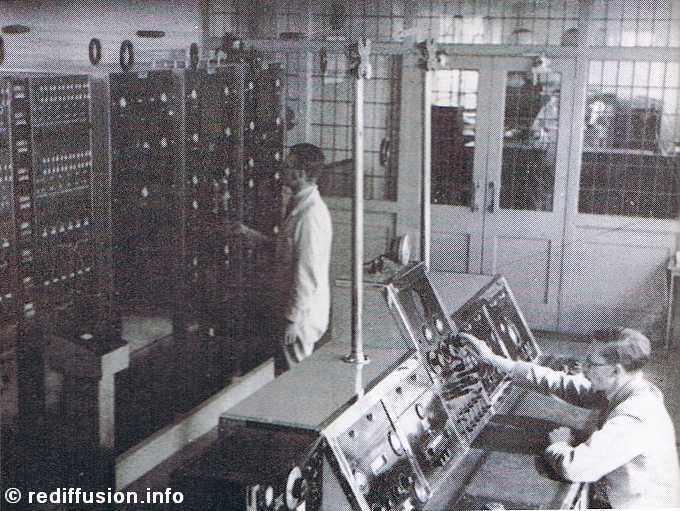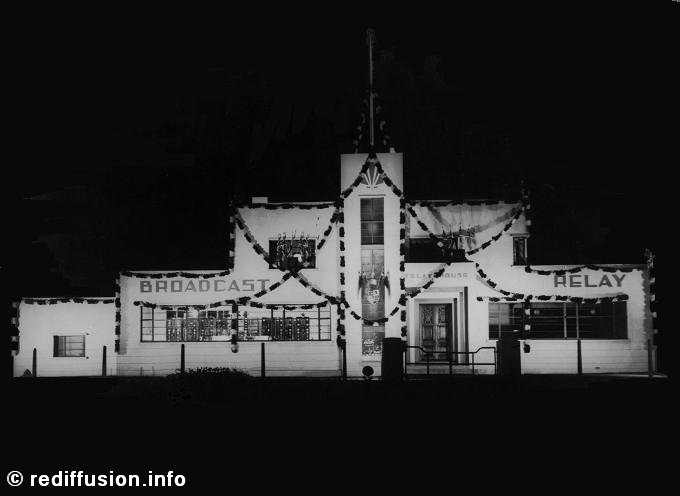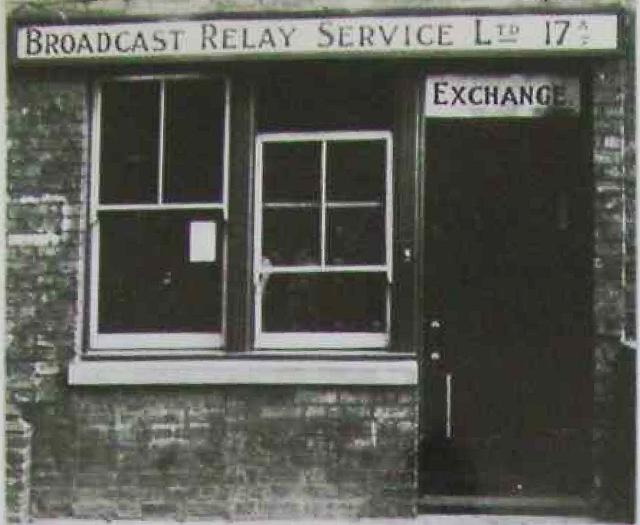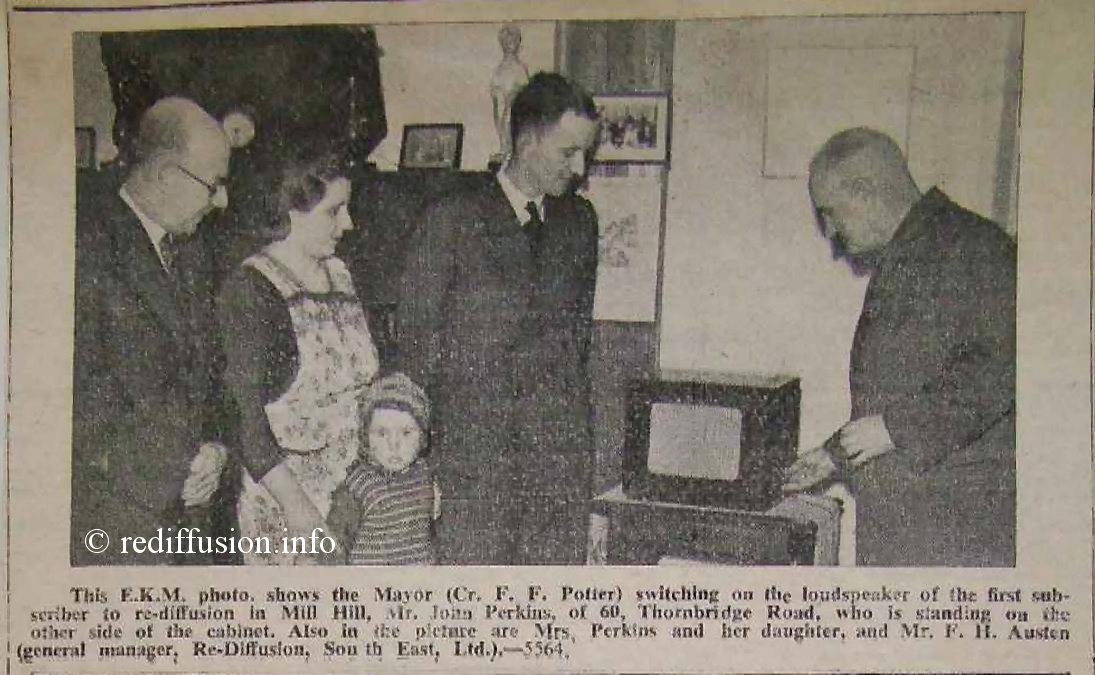



The History of Television
Events highlighting Rediffusion's involvment in the development of Cable Television and the manufacture of TV Receivers in the UK.
At the beginning of the ‘Twenties the London station of the British Broadcasting Company was established; each broadcasting station in those days had its call sign and as ‘2L0’ was receivable in Kent, Mr Austen not only made a receiver for himself but also produced wireless sets for sale.
In his own words ‘I sold one of my sets to a neighbour, Councillor Noble, but the set was continually breaking down. As my own equipment was functioning satisfactorily, I decided to stretch a pair of wires from my receiver to the one in Mr Noble’s home. This was the start of my career in wired broadcasting’.
On the 29th October 1929 he obtained consent from the Broadstairs Council to erect a pair of wires across the highway from his house in Church Street, Broadstairs to Magdala Road, St. Peters but the Council pointed out to him that this did not convey permission to relay wireless programmes. He therefore wrote to the General Post Office seeking permission and, on the 20th November 1929, this was granted ‘to establish a wireless receiving station for the purpose of distributing the broadcast wireless programmes’. Thus was born the
‘Broadstairs and St. Peters Radio Relay Service’. In fairness it must be said that the original Broadcast Relay Service, forerunner of Rediffusion, had established a relay service in neighbouring Ramsgate about a year earlier.
REDIFFUSION LIMITED
Carlton House, Lower Regent Street
London SW1Y 4LS
Tel. 01-930-0221
Associated Companies in over 175 towns in Great Britain and in Barbados, Bermuda. Canada, Ceylon, Guyana,
Hong Kong, Jamaica, Malaya, Malta, Singapore, South Africa, Trinidad and West Africa etc.
 | A drawing of Mr Austen’s improved amplifier |
|
A drawing of Mr Austen’s improved amplifier. The assembly comprised three separate power amplifiers, each having four DA6O triode valves in Class A parallel push-pull, and capable of delivering between 50 and 100W. The three driver stages, of two LS6As, were on the left-handpanel. Anode currents were measured by patching one of the meters to a jack socket associated with each valve.
FRANK H. AUSTEN (MBE) - A pioneer in Relay. A look back to the very early days of distribution.

The equipment side of the business in those days was pretty primitive, by any standards, and because there was no custom-built apparatus, all amplifying equipment had to be made locally. The original amplifier, 1928/29 vintage, was a breadboard model and because at that time there was no such thing as a power output transformer, the output was derived from the anodes of the output valves through a large bank of 2uF capacitors which chattered away in sympathy with the programme content and produced more sound volume than the present-day standard loudspeaker unit. By 1930 it was possible to make substantial improvements to the amplifying equipment by converting to a circuit derived from an article in The Wireless World; it is believed to have been the first to use the cathode-follower principle to drive the output stage, which comprised four DA6O valves (60W triodes) arranged in parallel push-pull, the driving valves being two LS6As. By then, output transformers capable of handling the very considerable output power, by the standards of those days, of about 100W had become available.
Click thumbnail for larger image
An indication of the operational rigours of the times is given by the fact that Frank Austen and Eric Parkins, who was one of Frank’s original employees when he inaugurated his service, carried out the conversion of the ‘breadboard’ amplifier to one of a more pretentious
type on a vertical plywood panel literally overnight, so as to re-use components recovered from the original amplifier; work began as soon as the service closed down for the night and the amplifier was ready for use when programmes resumed the following morning.
Loudspeakers for the service were also locally produced, in the family greenhouse or garage! Len Austen, at that time an apprenticed-joiner, made the cabinets whilst Eric Parkins cut the paper cones and fitted the balanced-armature moving-iron units, the best at that
time available. Very much the do-it-yourself operation, and network erection was almost certainly on similar lines, although Bill Bishop, another long-serving member of staff who retired as Manager of Folkestone in 1973, took a leading part in this from the outset.
A common feature of the times was that the majority of mains supplies were 200V d.c. and, for equipments of any reasonable output pretentions, rotary converters had to be installed to provide an a.c. power source.
Mr Austen’s system grew to have 118 subscribers, who paid a shilling a week for their service, but the concession agreement was due to expire at the end of 1932 and Broadcast Relay Service were casting covetous eyes on the Broadstairs area with a view to establishing an all-embracing system. An offer of £100 was made to Mr Austen for his relay service, with the promise of another £300 if the Broadstairs concession was renewed for a further ten years. This was accepted as also was the offer for Mr Austen to become the engineer-in-charge of the Ramsgate system at a salary of £250 p.a., quite a handsome sum at that time.
In anticipation of extending the service in Broadstairs an approach was made to the Council for permission and, as a demonstration, Mr Austen undertook to wire a row of thirty council houses. Every effort was made to conceal the cabling, largelyby running it below guttering, and to such good effect that when the council engineer was called to appraise the wiring he got rather hot under the collar about being
called out to examine work that had not even been started. When the cabling runs were pointed out to him he was so impressed that future co-operation was assured.
In 1931 Broadcast Relay Service had promoted a petition from residents in Margate to their Council to be allowed to have a relay service. This was granted in 1933 and the way was opened for a full-scale development of the Thanet area with Mr Austen at the helm.
The decision was made to establish a receiving station that could serve all the three towns of Ramsgate, Broadstairs and Margate and, if possible, be in an area where an a.c. mains supply was available so that the limitations of operating receivers on d.c. mains did not
apply. A site central to the three towns, in an elevated position and in undeveloped country, at that time, and having a.c. mains available was found at Westwood.
Another significant factor was that the site lay adjacent to and at about the mid-distance of a disused railway running in almost a straight line between Margate and Ramsgate; the Company was therefore able to erect its own input lines on pole routes along the old railway.
In the effort to avoid the use of rotary converters at the Margate amplifying station, the idea of transmitting the audio power over the line, instead of simply the input signal, was conceived and to give effect to this, 100W amplifiers were installed in the receiving hut and one of the earliest, if not the very first, High Level Link came into operation to Margate on 15th December 1933. Similar links to Broadstairs and Ramsgate followed and the whole scheme was so successful that it was decided to establish a comprehensive engineering and commer-
cial centre at the erstwhile receiving site.
Thus was created Relay House, Westwood which combined receiving and amplifying station with wiring stores and general offices and, above all, a flat in which Mr Austen lived for many years. The building was the first of its kind, quite pretentious and something of a show place for VIP’s so, in addition to literally ‘living on the job’, Mr Austen became quite resigned to receiving important guests and giving the conducted tour at most unusual times.
During the Second World War Thanet came very much under the direct attention of the enemy, at that time little more than a score of miles from the Channel Coast, but the fascinating story is a chapter in itself.
 | Interior of the original Westwood receiving site. |
|
 | Relay House, Westwood 1936 |
|
The interior of the original hut erected on the Westwood site. The photograph, taken in April 1934, shows receivers, pre-amplifiers and patching panels in the central structure which is flanked on each side by an A.10 (85W) amplifier, with power unit used for driving the H.L. Links. Two other receivers stand on the further A.10 and the table in the background
Relay House, West wood as it originally appeared, probably
around 1936. The equipment room has the wide window to the left of the ‘tower’. The height of the masts for the receiving aerials is worthy of note.
 | The Equipment Room at Westwood |
|
Part of the equipment room at Westwood, as at first arranged. The receivers
are in the desk in the foreground and to the left are the control bays and A.3 or A.30 amplifiers. Lines from the receiving aerials are carried overhead, with ring spacers, to the two pillars.
The Advent of Television
Mr Austen developed an interest in television, just as he had in radio, as soon as there was the first hint of a service and by 1932 had constructed his own Baird - type receiver, with a scanning disc made by himself and with the rotational speed of the disc controlled by finger pressure. He was judged to have achieved the longest- distance reception of the television transmissions from the London station and was awarded a prize of a properly-built scanning disc by Mr Baird.
Mr Austen and his team were always alive to means of attracting business and in early 1938, after the high- definition television system had started operation at Alexandra Palace, they scored a scoop by relaying the commentary on an important boxing championship fight (Len Harvey v Jock McAvoy) over the radio network. This commentary, for reasons best known to the BBC, was given only on television and the London station could only be received in Kent by the use of aerial arrangements beyond the purse of the ordinary householder.
Although, by 1948, Mr Austen had moved over to commercial operations and had advanced to the position of District Manager, followed a year later by appointment as General Manager of the company that had then become known as Rediffusion South East, his Region still maintained its flair for technical development and progress. In April 1951. after toying with the
idea of distributing television signals over the network at video frequencies, the first feeder ever to be made operational for an h.f. cable system was energised, in Margate. A carrier frequency of 11.8MHz was used and this was obtained as the i.f. output of a modified commercial receiver; other similar receivers, which were capable of operating on d.c mains, were modified to serve as subscribers’ receivers. This experimental system performed well and, with a change of frequency to 9.72MHz, emerged as the basis of TDUK.1. The reception advantages offered by Rediffusion in the South-East of England resutted in a dramatic expansion of cable vision throughout the Region and involved the development of several additional towns.
Mr Austen, who retired in 1970, was appointed an M.B.E. in 1960 for his meritorious service during the War.
Click thumbnail for larger image
Click thumbnail for larger image
Click thumbnail for larger image
 | Thanet Service Van 1930's |
|
 | F H Austen with sales staff 1960's |
|
 | Hugh Dundas and F H Austen |
|
 | F H Austen Portrait 1960's |
|
 | Broadcast Relay with Christmas Trimmings |
|
 | Broadcast Relay Equipment Building |
|
 | F H Austen Newspaper "Clipping" 1951 |
|
 | F H Austen Newspaper "Clipping" 1951 |
|
 | Folkestone Shop Early 1950's |
|
 | Relay House 1936 |
|
 | F H Austen sales promotion early 1960's |
|
 | Relay House ( Rediffusion ) 1975 |
|



